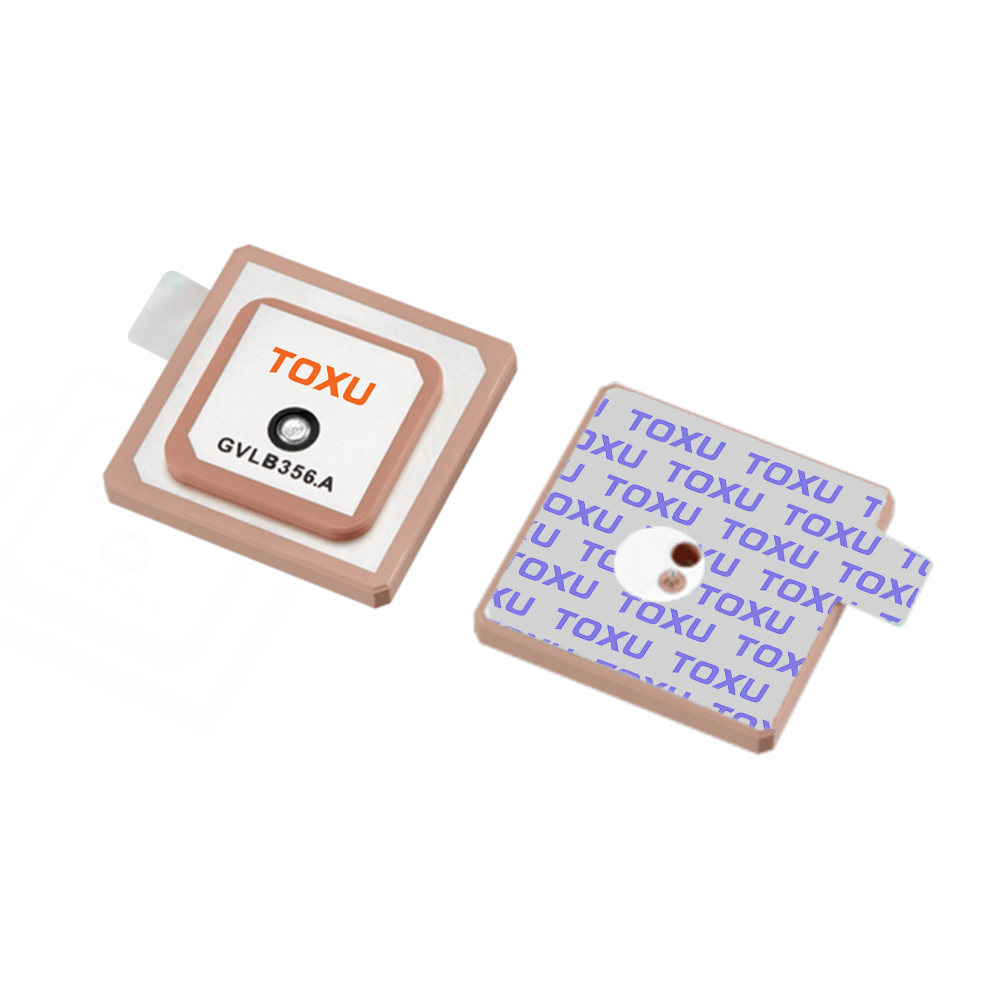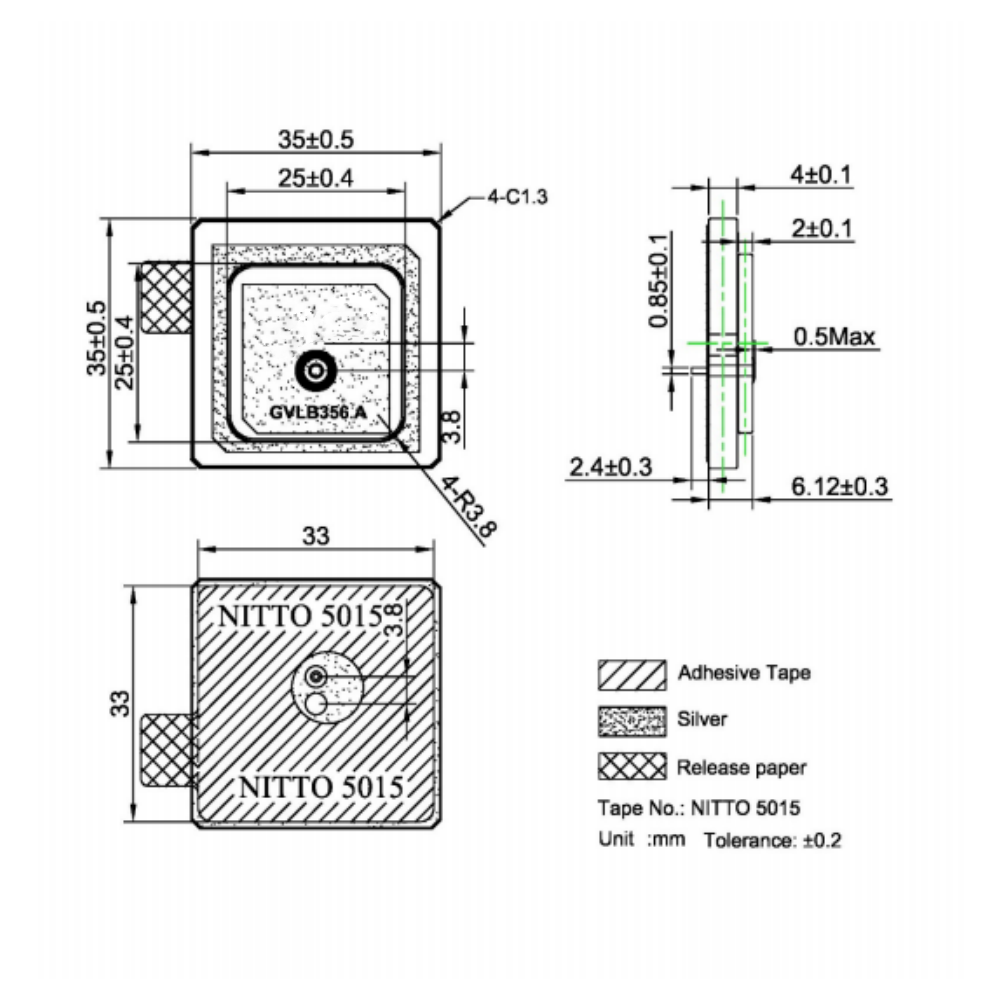5.1 Current Applications
5.1.1 Automotive Navigation
In the automotive industry, high - sensitivity passive GPS ceramic antennas are an integral part of vehicle navigation systems. They enable drivers to accurately determine their current location on a map, plan routes to their destinations, and receive real - time traffic information. The high sensitivity of the antenna is crucial in urban areas, where the GPS signals can be weak due to the presence of tall buildings. With the increasing popularity of autonomous vehicles, these antennas also play a vital role. Autonomous vehicles rely on precise GPS positioning to navigate safely on the roads. The high - sensitivity passive GPS ceramic antennas help in providing accurate location data, which is used in combination with other sensors, such as radar and lidar, to make driving decisions.
5.1.2 Aviation Navigation
In aviation, high - sensitivity passive GPS ceramic antennas are used in aircraft navigation systems. They are essential for safe takeoffs, landings, and in - flight tracking. During takeoff and landing, the pilot needs accurate location information to ensure that the aircraft follows the correct approach path. The high - sensitivity of the antenna allows it to receive GPS signals even in challenging conditions, such as in bad weather or when the aircraft is in the vicinity of large airport buildings that may cause signal interference. In - flight tracking using GPS helps air traffic control to monitor the position of aircraft, improving the efficiency and safety of air travel.
5.1.3 Outdoor Recreation
For outdoor enthusiasts, handheld GPS devices equipped with high - sensitivity passive GPS ceramic antennas are indispensable. Hikers, campers, and geocachers use these devices to navigate in remote areas where traditional maps may not be sufficient. The high - sensitivity of the antenna enables the device to quickly acquire and maintain a strong GPS signal, even in areas with limited satellite visibility, such as in mountainous regions or forests. This allows outdoor enthusiasts to accurately track their location, plan their routes, and avoid getting lost.
5.1.4 IoT Applications
In the era of the Internet of Things, high - sensitivity passive GPS ceramic antennas are being incorporated into a wide range of IoT devices. Asset trackers use these antennas to monitor the location of valuable assets, such as shipping containers, vehicles, and equipment. The low power consumption and compact size of the antennas make them ideal for IoT applications, where devices often need to operate on battery power for long periods and be small enough to be easily attached to the asset. Smart wearables, such as fitness trackers and smartwatches with GPS functionality, also use these antennas to track the user's location during activities like running, cycling, or walking. Environmental monitoring sensors, which are often deployed in remote areas, use high - sensitivity passive GPS ceramic antennas to report their location along with the environmental data they collect.
5.2 Future Trends
5.2.1 Integration with 5G and Beyond
As the world moves towards 5G and future wireless communication technologies, there is a growing trend of integrating high - sensitivity passive GPS ceramic antennas with these communication systems. In the future, smartphones and other mobile devices may need to combine GPS positioning with high - speed 5G communication capabilities. The integration of high - sensitivity passive GPS ceramic antennas with 5G modules can enable seamless integration of location - based services with high - speed data transmission. For example, in autonomous driving scenarios, 5G can provide low - latency communication between vehicles and infrastructure, while the GPS antenna ensures precise positioning. This combination allows autonomous vehicles to receive real - time traffic updates, road condition information, and communicate with other vehicles, all while maintaining accurate location awareness.
Moreover, in the context of smart cities, the integration of these antennas with 5G can support a wide range of applications. Smart traffic management systems can use 5G to collect data from various sensors and cameras in real - time, and the GPS antenna can provide the location information of these devices, enabling efficient traffic flow optimization. Emergency response systems can also benefit from this integration. When an emergency occurs, 5G can quickly transmit the emergency location (determined by the GPS antenna) to the relevant authorities, reducing response times and improving the chances of saving lives.
5.2.2 Multi - Constellation Compatibility
With the increasing number of global navigation satellite systems (GNSS) being developed and deployed, such as Galileo (European Union), GLONASS (Russia), and BeiDou (China), there is a growing demand for high - sensitivity passive GPS ceramic antennas to be compatible with multiple constellations. Multi - constellation compatibility offers several advantages, including improved positioning accuracy, increased availability of satellite signals, and enhanced reliability.
To achieve multi - constellation compatibility, the design of high - sensitivity passive GPS ceramic antennas needs to be optimized. One approach is to widen the antenna's bandwidth to cover the frequency bands of different GNSS constellations. For example, the GPS L1 band operates at 1575.42 MHz, Galileo E1 band at 1575.42 MHz (same as GPS L1 for compatibility), GLONASS G3 band at 1602 MHz, and BeiDou B1 band at 1561.098 MHz. By designing the antenna to have a bandwidth that covers these frequencies, it can receive signals from multiple constellations simultaneously.
Another aspect of multi - constellation compatibility is the antenna's polarization characteristics. Different GNSS constellations may use different polarization types or have specific polarization requirements. High - sensitivity passive GPS ceramic antennas need to be designed to accommodate these variations. For instance, while most GPS satellites use RHCP, some other constellations may have satellites that transmit LHCP signals or a combination of both. The antenna's radiating elements and overall structure can be optimized to receive both RHCP and LHCP signals, ensuring compatibility with a wide range of GNSS satellites.
5.2.3 Advanced Materials and Manufacturing Techniques
The future of high - sensitivity passive GPS ceramic antennas also lies in the development and application of advanced materials and manufacturing techniques. Researchers and manufacturers are constantly exploring new ceramic materials with even higher dielectric constants, lower loss tangents, and better environmental stability. For example, nanocomposite ceramic materials, which combine ceramic particles with nanoscale additives, offer the potential to enhance the performance of the antenna. These materials can have tailored dielectric properties, allowing for more precise control of the antenna's resonant frequency and radiation characteristics.
In terms of manufacturing techniques, additive manufacturing (3D printing) is emerging as a promising technology for producing high - sensitivity passive GPS ceramic antennas. 3D printing allows for the creation of complex antenna structures with intricate geometries that are difficult or impossible to achieve using traditional manufacturing methods. This flexibility in design can lead to antennas with improved performance, such as higher gain, wider bandwidth, and better polarization purity. Additionally, 3D printing can reduce the manufacturing time and cost of antennas, especially for small - batch production or custom - designed antennas for specific applications.
Another manufacturing trend is the integration of antennas into the device's structure using embedded technology. Instead of being a separate component, the antenna can be embedded within the housing or the PCB of the device. This not only saves space but also reduces the impact of external factors, such as mechanical stress and electromagnetic interference, on the antenna's performance. For example, in smartphones, the GPS antenna can be embedded into the device's frame or the back cover, eliminating the need for a separate antenna module and allowing for a more sleek and compact design.
5.2.4 Enhanced Anti - Interference Capabilities
As the number of wireless devices and communication systems increases, the electromagnetic environment becomes more complex, leading to an increase in interference that can affect the performance of GPS antennas. In the future, high - sensitivity passive GPS ceramic antennas will need to have enhanced anti - interference capabilities to ensure reliable signal reception.
One approach to improving anti - interference is the use of adaptive antenna arrays. An adaptive antenna array consists of multiple radiating elements and a signal processing system that can adjust the antenna's radiation pattern in real - time to focus on the desired GPS signals and reject interfering signals. The signal processing system can analyze the incoming signals, identify the direction of the GPS satellites and the interfering sources, and then adjust the weights of the signals from each radiating element to maximize the reception of the GPS signals and minimize the impact of interference.
Another technique for enhancing anti - interference is the use of frequency - selective surfaces (FSS). FSS are periodic structures that can reflect or transmit electromagnetic waves at specific frequencies. By integrating FSS into the design of high - sensitivity passive GPS ceramic antennas, the antenna can be made to selectively absorb or reflect interfering signals at frequencies outside the GPS bands, while allowing the GPS signals to pass through. This helps to reduce the amount of interference that reaches the antenna's radiating elements, improving the signal - to - noise ratio and the overall performance of the antenna.
Conclusion
High - sensitivity passive GPS ceramic antennas have become indispensable components in the field of GPS technology, playing a crucial role in enabling accurate and reliable location - based services across a wide range of applications. From automotive and aviation navigation to outdoor recreation and IoT devices, these antennas have proven their value by enhancing signal reception capabilities, offering compact size, low power consumption, and excellent environmental stability.
The design and construction of these antennas, with their high - dielectric - constant ceramic substrates, optimized radiating elements, efficient feed networks, and robust mounting and packaging, are key factors contributing to their performance. The working principles, based on electromagnetic wave interaction, circular polarization matching, and efficient signal reception and conversion, enable them to capture weak GPS signals and convert them into usable electrical signals for GPS receivers.
However, high - sensitivity passive GPS ceramic antennas also face challenges, such as multipath interference, limited bandwidth, and signal blockage. These challenges need to be addressed through continuous research and development to further improve the performance and reliability of these antennas. Techniques such as adaptive antenna arrays, frequency - selective surfaces, and multi - constellation compatibility are promising avenues for mitigating these challenges.
Looking towards the future, the integration of high - sensitivity passive GPS ceramic antennas with 5G and beyond, the development of multi - constellation compatible designs, the application of advanced materials and manufacturing techniques, and the enhancement of anti - interference capabilities will drive the evolution of these antennas. These advancements will not only expand their application scope but also improve their performance in increasingly complex electromagnetic environments.
In conclusion, high - sensitivity passive GPS ceramic antennas will continue to be at the forefront of GPS technology development. Their ability to provide accurate and reliable location information, combined with their adaptability to emerging technologies and applications, makes them essential for the continued growth of location - based services in various industries. As research and development efforts continue, we can expect to see even more advanced and efficient high - sensitivity passive GPS ceramic antennas that meet the ever - growing demands of the modern world.




































































 Language
Language
 En
En Cn
Cn Korean
Korean

 Home >
Home > 







 18665803017 (Macro)
18665803017 (Macro)













